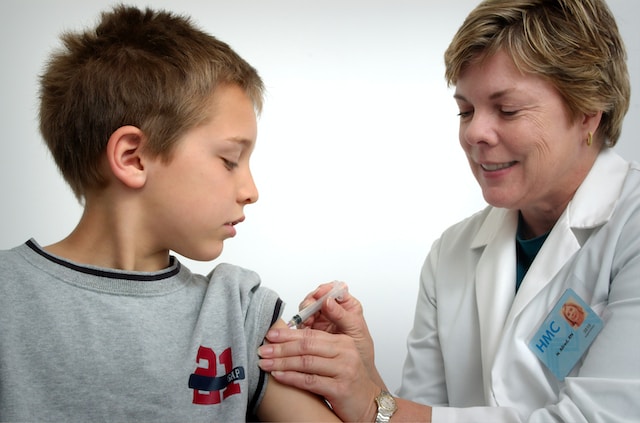The World Health Organization (WHO) reports that routine vaccination rates among children have increased, although there’s room for improvement.
According to UNICEF and WHO data, 20.5 million children missed one or more routine vaccines in 2022. This was 3.9 million less than the number who missed a vaccine in 2021 (24.4 million).
Though the improvement is encouraging, numbers remain high compared to immunization rates before the COVID-19 pandemic in 2019, when 18.4 million children missed routine vaccines.
Additionally, in 2022, 14.3 million children did not receive a single dose of the vaccine against diphtheria, tetanus, and pertussis (DTP). Compared to the 18.1 million children who received zero doses in 2021, the figure is a significant improvement, but it is higher than the 12.9 million kids in 2019.
Measles vaccination, which protects against one of the most contagious infections, has not recovered as well as other immunizations, placing 35.2 million additional children at risk of contracting the disease. Measles first-dose coverage climbed from 81% in 2021 to 83% in 2022, but it remained below the 86% level attained in 2019, WHO says. Because of this, 21.9 million kids missed the recommended measles vaccination in their first year of life last year—2.7 million more than in 2019—and another 13.3 million didn’t get their second dose, putting kids in under-vaccinated communities at danger of outbreaks.
Vaccination numbers in the U.S.
“Before vaccines, there were more than 500,000 cases of measles reported every year in the U.S. In 2020, there were 13. Let’s keep it that way,” stresses Vaccinate Your Family.
The Centers for Disease Control and Prevention (CDC) says that vaccination coverage in the United States remains stable for most vaccines, despite some disparities. The National Immunization Survey–Child by the CDC reports no decline for routine immunization among children born between 2018 and 2019, except for children living in rural areas and those below poverty level.
The report also notes that vaccine rates among privately insured children born between 2018 and 2019 was higher than children insured by Medicaid or uninsured—with the exception of HepB birth dose, which was lower only among uninsured children.
In the U.S., more than 90% of infants receive the recommended vaccinations. However, the CDC found that uninsured children are eight times more likely to miss vaccinations by the age of two.
Non-Hispanic Black and African American children also received fewer vaccines than non-Hispanic white children, according to the CDC.




